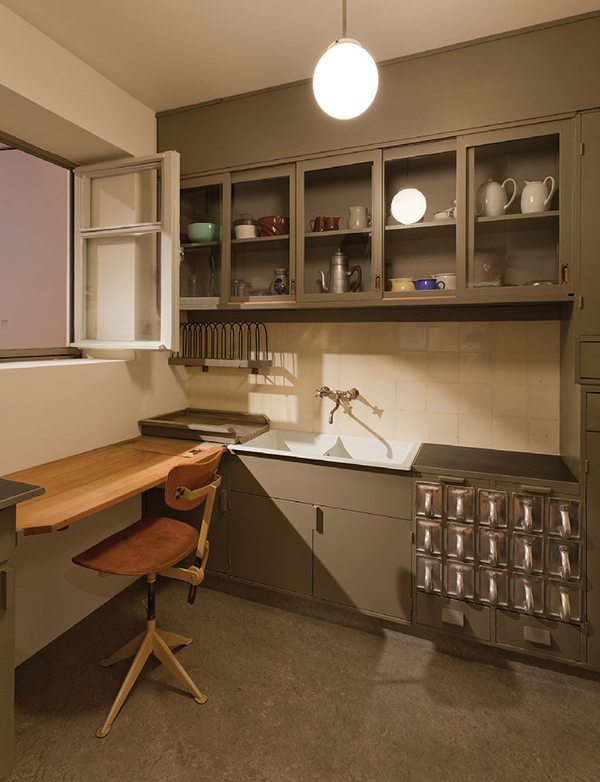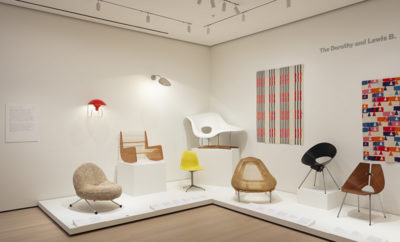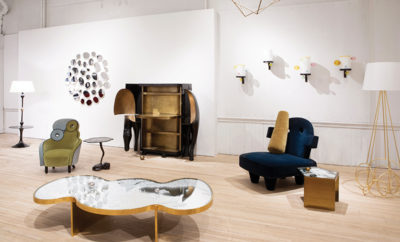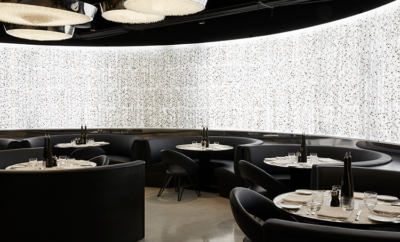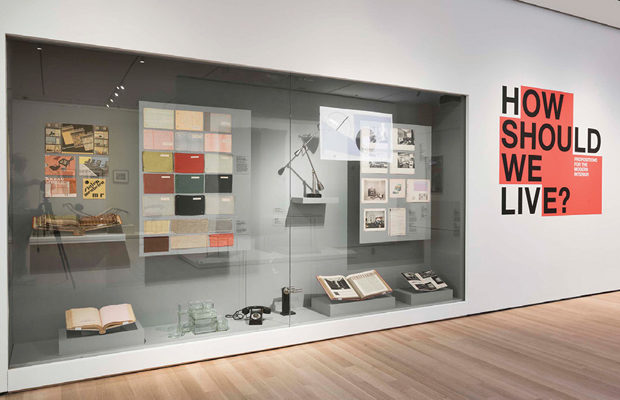 MARTIN SECK PHOTOS © 2016 MUSEUM OF MODERN ART
MARTIN SECK PHOTOS © 2016 MUSEUM OF MODERN ART
Exhibition
Modern Interiors at MoMA: A Creative Constellation
HOW SHOULD WE LIVE? It is a question so open-ended it could serve as the title of an experimental short story collection. Instead, it is the name of a subtly subversive design exhibition at the Museum of Modern Art in New York that questions the canon of early twentieth-century modernism and the museum’s own history of inclusion and exclusion in building that canon.
Drawn from the museum’s permanent collection and including some key new acquisitions, How Should We Live? Propositions for the Modern Interior (on view until April 23, 2017) highlights the contributions of women architects and designers working in the domestic and commercial realms from the 1920s to the 1950s, including designs for furniture, interiors, objects, textiles, houses, and retail environments. The work of Ray Eames, Eileen Gray, Grete Lihotzky, Charlotte Perriand, Lilly Reich, and Florence Knoll is given particular attention, alongside that of their male collaborators and other women designers such as Aino Aalto, Anni Albers, and Nomi Raymond. “It is part of a museum-wide effort to increase the representation of women,” says exhibition curator Juliet Kinchin. “It also shows the inherently collaborative nature of interior design.”
Perhaps the standout example in the show is Eileen Gray’s E-1027 House, her first architecture project, completed when she was fifty-one, which is illuminated through photographs and a contemporary video with dialogue taken from interviews with Gray and her collaborator Jean Badovici. The small house, which was carefully designed around a rugged French seaside site with careful attention to its solar orientation and cross breezes, is also a challenge to Le Corbusier’s idea of the house as a machine for living. Where Le Corbusier proselytized universal solutions, Gray’s house is highly personal and site-specific. “The E-1027 House uses the same material repertoire as Le Corbusier but it allows for the intuitive and the emotional. It’s a stunning coming together of her expertise in furniture and interior design with architecture,” Kinchin says.
For international students studying at the Universitaire de Paris, Charlotte Perriand designed a model bedroom with integrated storage, including a dressing cabinet with colored bins, and a built-in blackboard and bookshelves. The exhibition’s full-scale mock-up of the room will likely give many space-starved New Yorkers pangs of envy.
The exhibition also includes a partial reconstruction of a café Lilly Reich designed with Ludwig Mies van der Rohe to introduce his cantilevered tubular steel furniture. Reich created colorful fabric “walls” that enclosed the café space, which served as a place where the public could test the lightness and bounce of Mies’s radical new furniture. In the exhibition, the fabric walls also shield the gallery from harsh daylight and—during select hours—allow visitors to relax and enjoy a pour-over coffee. Mies van der Rohe’s austerity becomes approachable in Reich’s hands.
Titling the exhibition with a question is appropriate given the playful and nondogmatic nature of the materials on display. “The women have more of a sense of humor,” Kinchin says. She points to Marguerita Mergentime’s printed linen Food for Thought tablecloth, with political slogans from different eras in American history, each in a period-appropriate typeface. Mergentime was also an avid collaborator with artists and other designers. She commissioned Frederick Keisler to design her New York apartment, which Kinchin says, was a highly cinematic space. Film was a major influence on American design in the 1920s and 1930s, which MoMA generally sidelined in favor of European modernism. “We’re always looking at ways to reinterpret our collection and tweak the narrative of modernism that MoMA helped establish,” she says.
How Should We Live offers many ways to expand our understanding of the early development of modernism. Looking beyond the well-known heroes, one finds a vast constellation of creative architects and designers—including many pioneering women—who were figuring out how to inhabit a brave new world. moma.org


